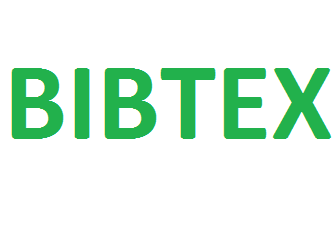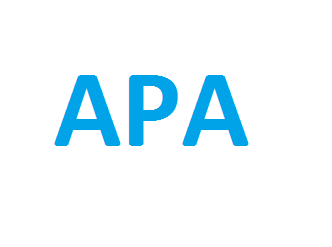
The Academic Perspective Procedia publishes Academic Platform symposiums papers as three volumes in a year. DOI number is given to all of our papers.
Publisher : Academic Perspective
Journal DOI : 10.33793/acperpro
Journal eISSN : 2667-5862
Effect of Nanofluid on Cutting Temperature in Turning of Inconel 625 with Ceramic Tools
Çağrı Yıldırım
1594
612
Abstract
Inconel 625 is used extensively in critical parts of aircraft, especially gas turbine engines. However, the high strength, which is one of the reasons of choice, considerably reduces the workability of this material. In such a case, the most preferred method is the use of cutting fluid. On the other hand, the fact that conventional cutting fluids adversely affect the environment, worker health and production costs concerns the enterprises. Recently, researchers and businesses have been working hard to reduce the amount of coolant without reducing production efficiency. In this study, some cooling/lubrication strategies have been tried to serve this purpose. In other words, the Minimum Quantity Lubrication (MQL) method and the MQL method containing 0.5% by volume nano Al2O3 additive were compared to dry processing. In addition, three different cutting speeds (120, 160, 200 m/min) and three different feeds (0.05, 0.1, 0.15 mm/rev) were chosen, as the behavior of the cooling / lubrication method under different cutting parameters was wondered. The Taguchi L9 vertical index was preferred for determining the number of experiments. Signal/Noise (S/N) ratio was effective in determining the optimum parameters. In addition, ANOVA analysis was performed to determine the effect levels of the parameters. In order to guide similar studies in the future, an estimation model was established through regression analysis. After the analysis of the test results, the optimum cutting temperature was obtained with a combination of vegetable cutting oil containing 0.5% Al2O3 by volume, cutting fluid of 120 m/min and feed rate of 0.05 mm/rev.
Keywords:
Inconel 625, tornalama, nano-akışkan, Alüminyum Oksit, kesme sıcaklığı
References
[1] Li S, Wei Y, Shi Y, Zhu Z, Zhang D. Microstructure characteristics of Inconel 625 superalloy manufactured by selective laser melting. J. Mater. Sci. Technol. 2015;31:946-952.
[2] Abioye TE, Folkes J, Clare AT. A parametric study of Inconel 625 wire laser deposition. J. Mater. Sci. Technol. 2013;231:2145-2151.
[3] Paul CP, Ganesh P, Mishra SK, Bhargava P, Negi JA, Nath, AK. Investigating laser rapid manufacturing for Inconel-625 components. Opt. Laser Technol. 2007;39(4): 800-805.
[4] Shankar V, Rao KBS, Mannan SL. Microstructure and mechanical properties of Inconel 625 superalloy. J. Nucl. Mater. 2001;288(2-3);222-232.
[5] Lotfi M, Jahanbakhsh M, Farid AA. Wear estimation of ceramic and coated carbide tools in turning of Inconel 625: 3D FE analysis. Tribol. Int. 2016;99:107-116.
[6] Ramanujam R, Venkatesan K, Saxena V, Pandey R, Harsha T, Kumar G. Optimization of machining parameters using fuzzy based principal component analysis during dry turning operation of Inconel 625-A hybrid approach. Procedia Eng. 2014;97:668-676.
[7] Jahanbakhsh M, Akhavan Farid A, Lotfi M. Optimal flank wear in turning of Inconel 625 super-alloy using ceramic tool. Proc. Inst. Mec. Eng., Part B: J. Eng. Manuf. 2018;232(2):208-216.
[8] Xavior MA, Adithan M. Determining the influence of cutting fluids on tool wear and surface roughness during turning of AISI 304 austenitic stainless steel. J. Mater. Process. Technol. 2009;209(2):900-909.
[9] De Chiffre L. Function of cutting fluids in machining. Lubr. Eng. 1988;44:514-518.
[10] Sokovic M, Mijanovic K. Ecological aspects of the cutting fluids and its influence on quantifiable parameters of the cutting processes. J. Mater. Process. Technol. 2001;109(1-2):181-189.
[11] Shen B, Shih AJ, Tung SC. (2008). Application of nanofluids in minimum quantity lubrication grinding. Trib. Trans. 2008;51(6):730-737.
[12] Sharma AK, Tiwari AK, Dixit AR. Effects of Minimum Quantity Lubrication (MQL) in machining processes using conventional and nanofluid based cutting fluids: A comprehensive review. J. Clean. Prod. 2016;127:1-18.
[13] Nguyen TK, Do I, Kwon P. A tribological study of vegetable oil enhanced by nano-platelets and implication in MQL machining. Int. J. of Precis. Eng. and Manuf. 2012;13(7):1077-1083.
[14] Yıldırım ÇV. Experimental comparison of the performance of nanofluids, cryogenic and hybrid cooling in turning of Inconel 625. Tribol. Int. 2019:137;366-378.
[15] Sharma VS, Dogra M, Suri NM. Cooling techniques for improved productivity in turning. Int. J. Mach. Tools Manuf. 2009:49(6);435-453.
[16] Samuel J, Rafiee J, Dhiman P, Yu ZZ, Koratkar N. Graphene colloidal suspensions as high performance semi-synthetic metal-working fluids. J. Phys. Chem. C, 2011:115(8);3410-3415.
[17] Raju RA, Andhare A, Sahu NK. (2017). Performance of multi-walled carbon nanotube-based nanofluid in turning operation. Mater. Manuf. Process. 2017:32(13);1490-1496.
[18] Sharma P, Sidhu BS, Sharma J. Investigation of effects of nanofluids on turning of AISI D2 steel using minimum quantity lubrication. J. Clean. Prod. 2015:108; 72-79.
[19] Hegab H, Kishawy H. Towards sustainable machining of Inconel 718 using nano-fluid minimum quantity lubrication. J. Manuf. Materials Process. 2018:2(3);50-58.
[20] Hegab H, Kishawy HA, Gadallah MH, Umer U, Deiab I. On machining of Ti-6Al-4V using multi-walled carbon nanotubes-based nano-fluid under minimum quantity lubrication. Int. J. Adv. Manuf. Technol. 2018:97(5-8);1593-1603.
[21] Devendiran DK, Amirtham VA. (2016). A review on preparation, characterization, properties and applications of nanofluids. Renew. Sustain. Energy Rev. 2016:60;21-40.
[22] İç YT, Duran H, Keçeci B, İlik E, Bilgiç B. Çok yanıtlı Taguchi eniyilemesine yönelik bir bilgisayar uygulamasının geliştirilmesi. Politeknik Dergisi, 2016:19(3);311-323.
[23] Rajeesh J, Balamurugan R, Balachandar K. Process parameter optimization of friction stir welding of aluminium 2014-T651 alloy using Taguchi technique. J. Eng. Sci. Technol. 2018:13(2);515-523.
[24] Şirin Ş, Kıvak T. Performances of different eco-friendly nanofluid lubricants in the milling of Inconel X-750 superalloy. Tribol. Int. 2019:137;180-192.
[25] Tawfik MM. Experimental studies of nanofluid thermal conductivity enhancement and applications: a review. Renew. Sustain. Energy Rev. 2017:75;1239-1253.
[26] Klocke F, Eisenblätter, G. (Dry cutting. Cirp Annals. 1997:46(2);519-526.
Cite
-
 %0 Academic Perspective Procedia (ACPERPRO) Effect of Nanofluid on Cutting Temperature in Turning of Inconel 625 with Ceramic Tools% A Çağrı Yıldırım% T Effect of Nanofluid on Cutting Temperature in Turning of Inconel 625 with Ceramic Tools% D 11/22/2019% J Academic Perspective Procedia (ACPERPRO)% P 370-380% V 2% N 3% R doi: 10.33793/acperpro.02.03.10% U 10.33793/acperpro.02.03.10
%0 Academic Perspective Procedia (ACPERPRO) Effect of Nanofluid on Cutting Temperature in Turning of Inconel 625 with Ceramic Tools% A Çağrı Yıldırım% T Effect of Nanofluid on Cutting Temperature in Turning of Inconel 625 with Ceramic Tools% D 11/22/2019% J Academic Perspective Procedia (ACPERPRO)% P 370-380% V 2% N 3% R doi: 10.33793/acperpro.02.03.10% U 10.33793/acperpro.02.03.10
© Academic Perspective 2018. All rights reserved.




